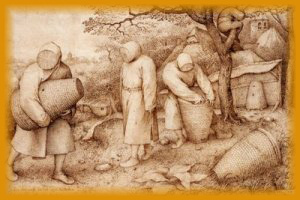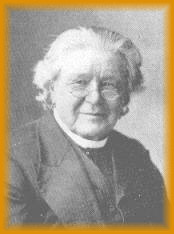
HISTORY OF BEEKEEPING
There is much historical data indicating that beekeeping is an ancient art.
Our earliest records show that beekeeping has existed for over 15,000 years and that it can be linked to even Biblical times!

“Eat honey, my son, for it is good; honey from the ” comb is sweet to your taste.
Proverbs 24:13
“So I have come down to rescue them from the hand of the Egyptians and to bring them up out of that land into a good and spacious land, a land flowing with milk and honey--the home of the ” Canaanites, Hittites, Amorites, Perizzites, Hivites and Jebusites.
Exodus 3:8

Collecting honey from wild bee colonies is one of the most ancient human activities and is still practiced by aboriginal societies in parts of Africa, Asia, Australia, and South America. Some of the earliest evidence of gathering honey from wild colonies is from rock paintings, dating to around 13,000 BC. Gathering honey from wild bee colonies was usually done by subduing the bees with smoke and breaking open the tree or rocks where the colony was located, often resulting in the physical destruction of the colony.

Records indicate that beekeeping came to North America around 800-900 AD by way of the Irish and Norwegians. Research into beekeeping shows that by 1850, bees had colonized the entire world. And it is around that time that American Reverend Lorenzo Lorraine Langstroth published his book, "The Hive and the Honey Bee". This book would go on to revolutionize the way that we looked at bees and beekeeping. Even to this day, Langstroth's literary work remains relevant and a must read for all budding and veteran Apiarists alike.
It is because of Langstroth that the current method of keeping bees was established. The common beehive that we know now was once known as the "Langstroth Hive" and that invention made beekeeping more profitable and easier to manage & handle for Beekeepers everywhere.

Langstroth was the first person to make practical use of Huber's earlier discovery that there was a specific spatial measurement between the wax combs, later called "the bee space", which bees would not block with wax, but kept as a free passage. Having determined this "bee space" (between 5 and 8 mm, or 1/4 to 3/8"), Langstroth then designed a series of wooden frames within a rectangular hive box, carefully maintaining the correct space between successive frames, and found that the bees would build parallel honeycombs in the box without bonding them to each other or to the hive walls.
This enables the beekeeper to slide any frame out of the hive for inspection, without harming the bees or the comb, protecting the eggs, larvae and pupae contained within the cells. It also meant that combs containing honey could be gently removed and the honey extracted without destroying the comb. The emptied honey combs could then be returned to the bees intact for refilling.
As we can see, beekeeping has certainly evolved over many thousands of years from a place where the primary concern was survival, to this day and age where we care for the bees and their ecosystem. The reward is not only Honey, but also a better understanding of our planet's flora and fauna.
